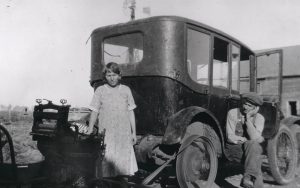 W Patrick McCray in Aeon:
W Patrick McCray in Aeon:
[C]onsider the Otts. Somewhere in Kansas during the early years of the Great Depression, Bill Ott and his daughter Lizzie did something different with their car. By removing the rear tyre and adding a drive belt, they built a homemade car-powered washing machine. As an ‘innovation thought leader’ at Davos or TED might say, the Otts hacked the automobile and re-invented the washing machine. Stated simply – they innovated. So how come you haven’t heard of the Otts? Because the Great White Man narrative of innovation ignores the critical role that anonymous, unrecognised people such as Bill and Lizzie Ott play in the incrementalism that is the real stuff of technological change. Most of the time, innovators don’t move fast and break things.
Over the past two centuries, almost all professional scientists and engineers have worked not to cut down the old trees of technologies and knowledge and grow new ones, but to nurture and prune the existing ones. In corporate-based science and technology, disruption is very rare, continuity rules, and makes change and advance possible. At different times in history, such disruption was even discouraged. At the great industrial labs of the early 20th century, companies such as General Electric (GE) or AT&T didn’t want their engineers and scientists to create excessive technological novelty – tens of millions of company dollars had been invested to build existing technological systems. Instead, research managers such as Willis R Whitney, head of GE’s research, sought incremental improvements that would marginally advance the company’s technologies and extend its intellectual property regime.
More here.
